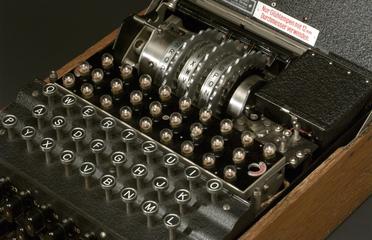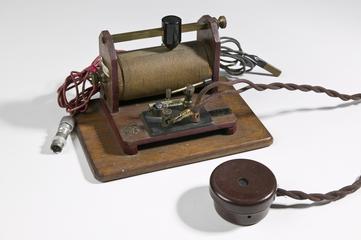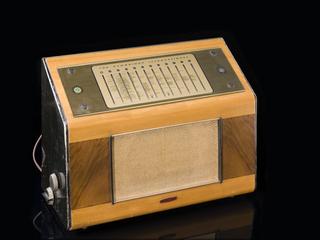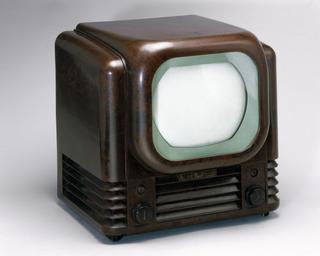
Model of A S Popov's 1895 Lodge-type coherer receiver, 2014
- Made:
- 2014 in St Petersburg






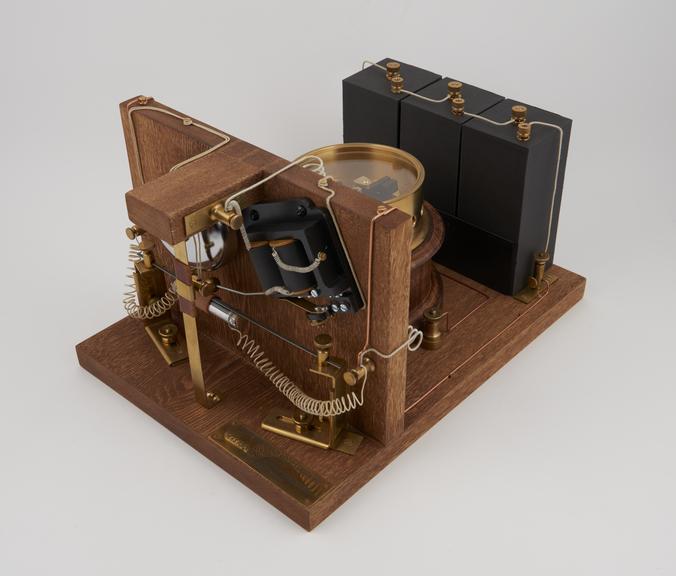
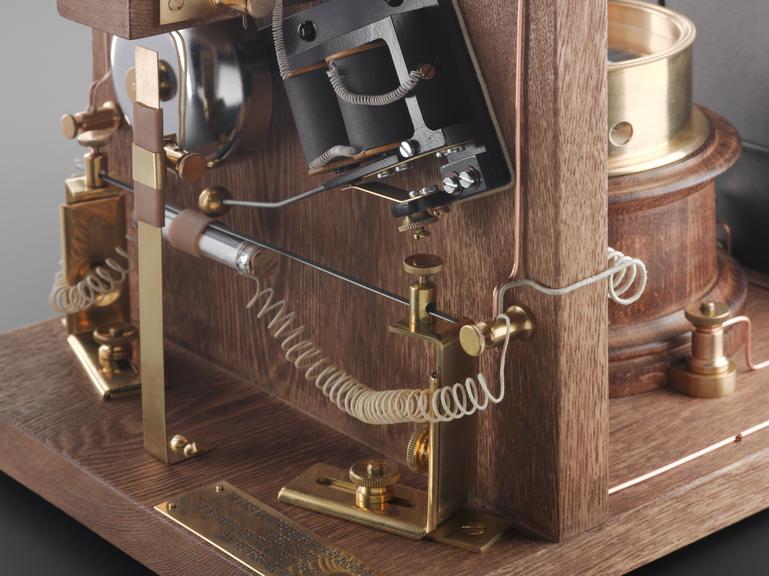
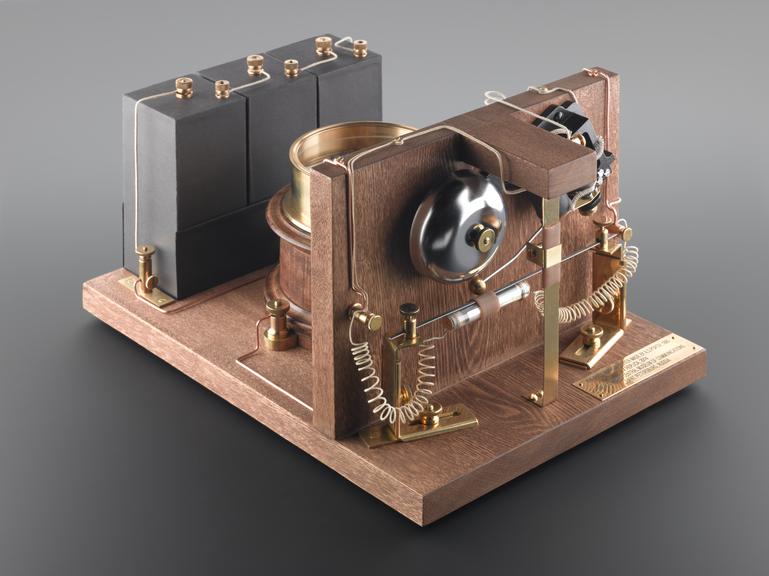

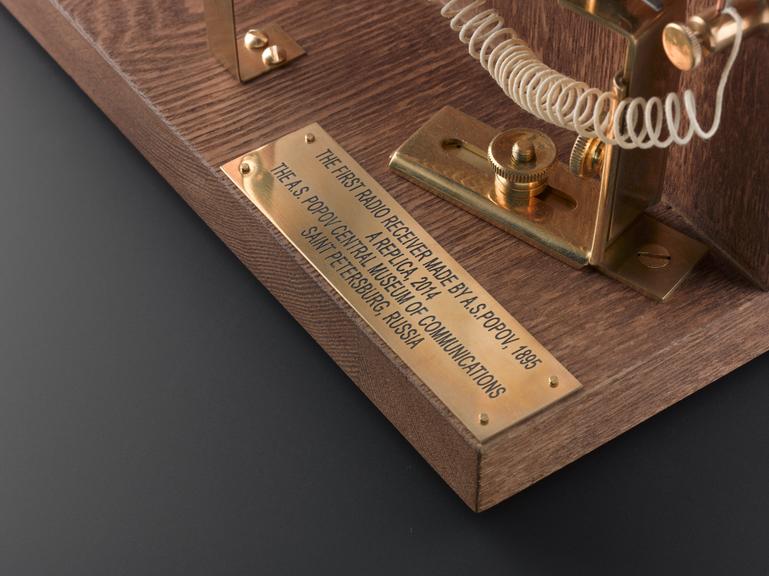

Model, scale 1:1, of the Lodge-type coherer receiver made by A S Popov in Russia in 1895, made by the A S Popov Central Museum of Communications, St Petersburg, 2014. The original was used by Popov when he recorded the occurrence of thunderstorms at ranges of up to thirty miles and for which he expressed the hope in January 1896 that it could eventually be used for the reception of wireless telegraph signals.
Popov improved upon Lodge’s original coherer, equipping it with a wire antenna. On 7 May 1895 he described, and may have shown, apparatus that could detect electromagnetic disturbances of the atmosphere such as lightning. At this time he had no transmitter of electromagnetic waves. Up to June 1896, when Marconi published a description of his equipment for transmitting and receiving intelligible signals, Popov had not published any description of any means of sending or receiving intelligence by unguided invisible electromagnetic waves (radio in its broadest definition).There is indirect evidence that Popov may have demonstrated the transmission of intelligence to others on 24 March 1896, but the claim relies on untested reminiscences and was not made public until 1925.
Details
- Category:
- Radio Communication
- Object Number:
- 2014-503
- Materials:
- glass, metal (unknown), rubber (unidentified) and wood (unidentified)
- Measurements:
-
overall: 205 mm x 262 mm x 360 mm, 7 kg
- type:
- radio receiver
- copyright:
- Science Museum Group
- credit:
- Donated by the A.S. Popov Central Museum of Communications
